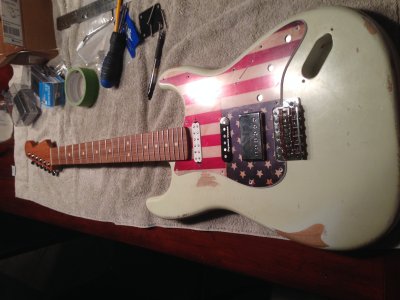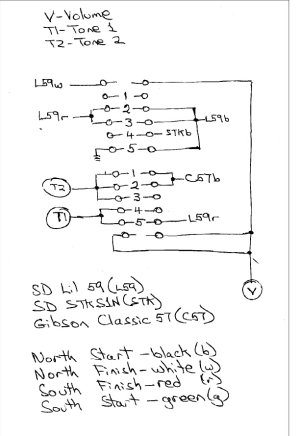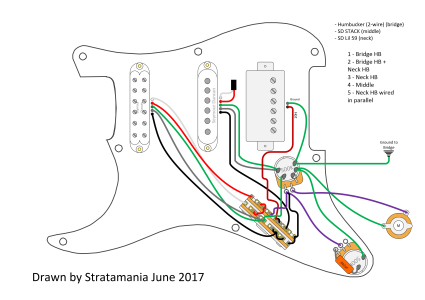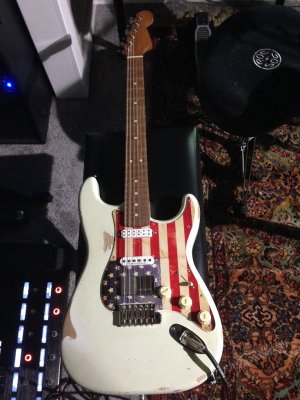It's been a while since I last posted here but I'm working on a new Strat project and seeking some help with how to do the wiring. The project guitar is...
- Worn Strat body obtained off Craigslist
- Warmoth Goncalo Alves/Pau Ferro neck with SS6115 frets
- MannMade trem
- Gibson 57 Classic (2-wire) (bridge)
- SD STK S1N (middle)
- SD Lil 59 (neck)
I'm currently thinking of using the following switch settings...
1 - Bridge HB
2 - Bridge HB + Neck HB
3 - Neck HB
4 - Middle
5 - Neck HB wired in parallel
I have both a CRL switch and a super switch. I have CTS 500k audio taper pots.
My specific questions are...
1. Do I need to use the super switch?
2. Should I use 1 tone pot for bridge and 1 for middle and neck?
3. Should I wire both tone pots with .022 caps?
4. Are the 500k pots OK or should I use a 250k pot somewhere.
5. I'm planning on 1 volume and 2 tone pots but honestly rarely use my tone controls so should I go with 2 volumes and 1 tone?
A more general question is whether or not anyone has any general recommendations. I'm not set on anything yet (other then my pickup choices) so any advice would be appreciated!!!
- Worn Strat body obtained off Craigslist
- Warmoth Goncalo Alves/Pau Ferro neck with SS6115 frets
- MannMade trem
- Gibson 57 Classic (2-wire) (bridge)
- SD STK S1N (middle)
- SD Lil 59 (neck)
I'm currently thinking of using the following switch settings...
1 - Bridge HB
2 - Bridge HB + Neck HB
3 - Neck HB
4 - Middle
5 - Neck HB wired in parallel
I have both a CRL switch and a super switch. I have CTS 500k audio taper pots.
My specific questions are...
1. Do I need to use the super switch?
2. Should I use 1 tone pot for bridge and 1 for middle and neck?
3. Should I wire both tone pots with .022 caps?
4. Are the 500k pots OK or should I use a 250k pot somewhere.
5. I'm planning on 1 volume and 2 tone pots but honestly rarely use my tone controls so should I go with 2 volumes and 1 tone?
A more general question is whether or not anyone has any general recommendations. I'm not set on anything yet (other then my pickup choices) so any advice would be appreciated!!!






